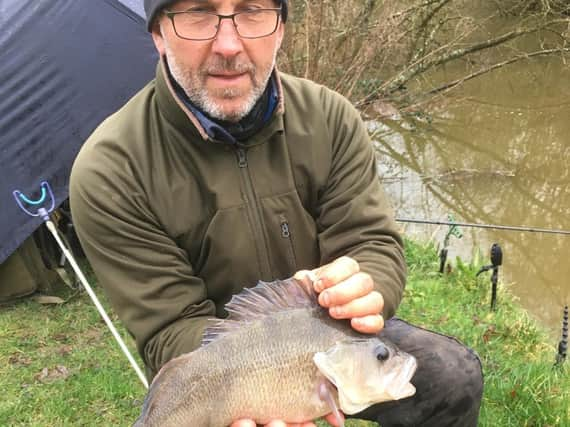Angling opinion: Why the perch has place in many hearts


Chances are that after rubbing their chin and searching through long-forgotten memories the majority will all say that it was probably a perch, a little one of no more than a few ounces, a small little freshwater warrior with a massive amount of attitude.
The European perch (Perca fluviatilis) is found across the whole of northern Europe and the UK. One of the reasons that it’s often the first fish you catch is that there is barely a stretch of water that doesn’t hold a few.
Advertisement
Hide AdAdvertisement
Hide AdFrom a tiny little brook or stream to a canal or mighty river, from a farm pond or massive reservoir finding a willing perch is always on the cards. It can be found across the whole country and cold doesn’t seem to worry it. Yet this little chap was nearly wiped out in the UK.
In the mid 1960s a virus started to kill off perch in their thousands wiping out the species in many parts of the country. Mercifully, the virus stopped, and our little friend survived, albeit in vastly reduced numbers. Fortunately, numbers are rising once again.
The other reason why anglers remember this particular fish, over the equally common roach or rudd is that it’s very distinctive.
From its flat-sided rough-skinned greenish body graduating down to a white belly to its red pelvic fins, two dorsal fins and five black vertical stripes down the sides of its body, it’s not like any other fish in our waters. But it’s probably that dorsal fin that literally stands out.
Advertisement
Hide AdAdvertisement
Hide AdNo matter the size of the fish it will, on capture, erect that big fin with its row of sharp-looking spines, a sort of `come on if you’re hard enough’ show of bravado.
As a young child I totally believed in the common myth that these spines were poisonous which led to a certain level of panic when I swung my first one in, resulting in much convoluted handling and spine avoidance to ensure I didn’t die a painful and excruciating death.
That dramatic tiger-striped body gives it perfect camouflage, lurking as it does near trailing weed, reed beds or sunken posts, for this fish is a predator, darting out to engulf a careless minnow or small roach. It is also cannibalistic and will eat its smaller brethren given half a chance.
It does this by swallowing its prey whole for unlike its fellow predator, the oike, it does not have a row of needle-sharp teeth. Instead it simply swallows the fish and relies of a set of back teeth to crush the prey.
Advertisement
Hide AdAdvertisement
Hide AdThis is one reason that the fish often swallows the hook and careful unhooking and some skill with a disgorger is often required. However, be careful as bizarrely its heart is close to its head. When in doubt just cut the line as close to the mouth as possible and let nature take its course.
Perch are not massive; the current record is just over 6lb, but the rise of commercial fisheries has led to many local waters seeing big specimens being caught.
Many are introduced to keep small silver fish numbers down and unlike pike, which can grow to nearly 50lb, they will not eat your best fish. Many experts predict that the perch record is the next to fall and with specimens over 5lb now being caught it’s difficult to disagree.
So how does one go about catching one? Izaak Walton of Complete Angler fame described perch as ‘a bold biting fish’ and a ‘worm, minnow or little frog’ as bait was recommended, Today the first two options are tried and tested but the latter might be a step too far.
Advertisement
Hide AdAdvertisement
Hide AdTactics-wise the challenge is finding the big chaps. Perch like to hunt in packs, often staying very close to cover. Fish close to a snag, man-made structure or an overhanging bank, put a nice red worm or big bunch of maggots on the hook and its pretty certain a small perch will find your bait. For the specimen, and here we are talking about a fish over 2lb, a whole lob worm is pretty irresistible and recently the use of a large king prawn has accounted for some massive fish.
A small dead bait will also work but remember pike like these as well and with those teeth they will chomp through your line in a flash. One thing you will find is that perch will try to eat anything they can get their very large mouths around so do not be surprised when your big bait has been gobbled up by a 4oz billy perch.
Currently a very popular method is drop shotting. Here a small little lure (a small plastic frog perhaps?) is bobbed up and down along the edge of a lake or canal wall. The angler simply waits for that tell-tale bite as the perch rushes out unable to resist all that movement.
It is a nice way of fishing using minimal equipment and the angler can cover miles of river or canal bank, offering a chance of some much-needed exercise for this often-sedentary sport.
As winter draws ever nearer there is no better time to hunt down `old stripey’ – and at the same time get the your heart rate up.
Steve Penticost,
Petworth & Bognor Angling Club;